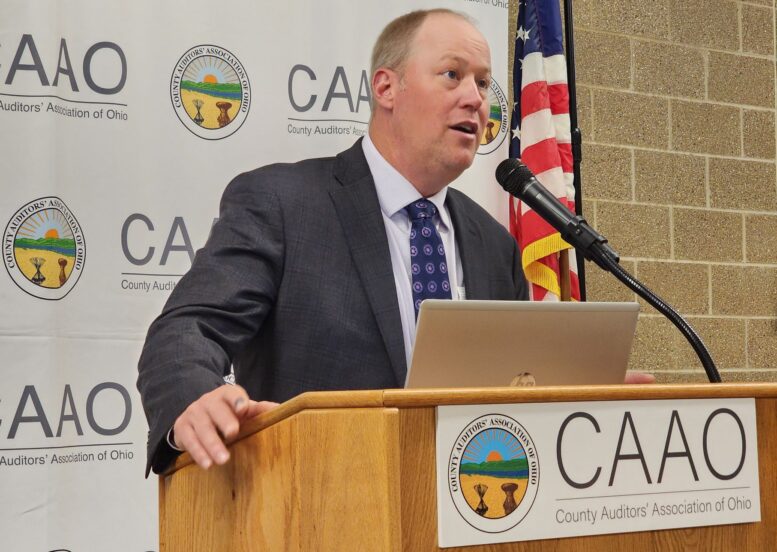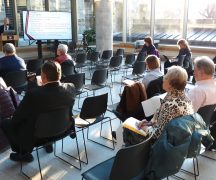By JAN McLAUGHLIN
BG Independent News
As property values continue to mushroom, county auditors in Ohio continue to take the brunt of disgruntled taxpayers facing higher property taxes.
While state legislators introduce frequent bills aimed at reducing property tax strains on Ohio residents, all of the bills miss the target, according to the County Auditors Association of Ohio.
No real property tax reform has occurred in Ohio for decades and county auditors are tired of being the bad guys when property values go up – which in recent years happens often and in sizable spikes.
“The last time that comprehensive property tax reform was undertaken was in the 1970s,” Wood County Auditor Matt Oestreich said. “We are far overdue for updates and with the ever-increasing burden on local property taxpayers, we cannot wait any longer.”
Meanwhile, as property values soar, the values have sunk for the Homestead Program intended to help Ohioans 65 and older and those with disabilities. Add to that the fact that most school districts in Ohio are at the 20-mill floor, the state is seeing a “perfect storm” for property tax increases, said Wood County Auditor Matt Oestreich.
So county auditors are making the rounds across Ohio to garner support for their ideas for property tax relief. On Wednesday, more than 60 officials from Northwest Ohio gathered to learn how to make their voices heard.
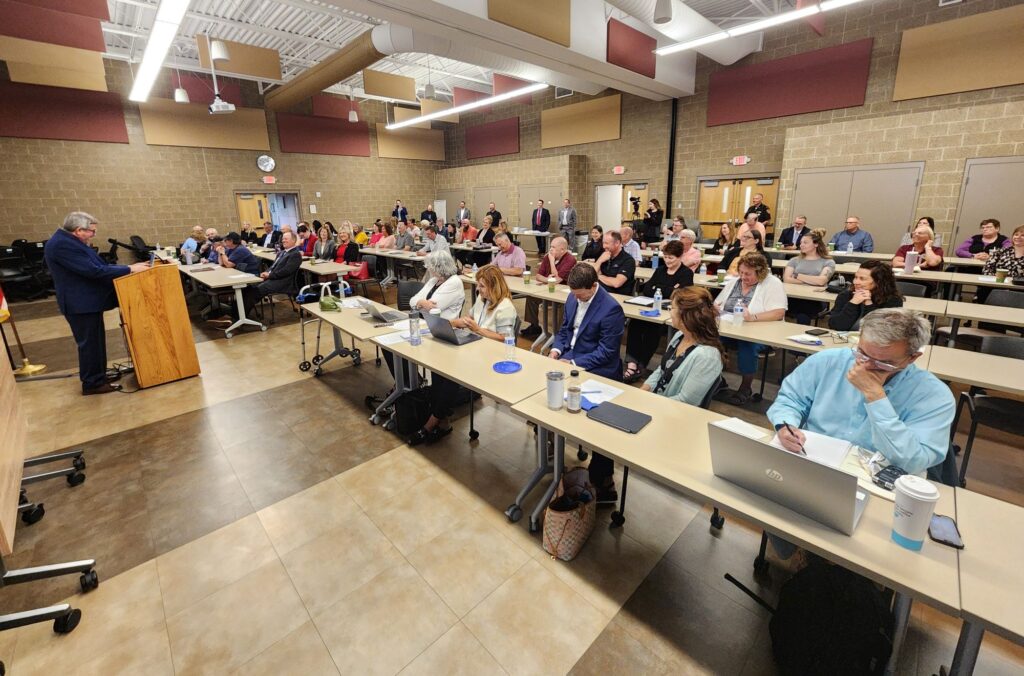
First, county auditors want taxpayers to know they are just following the rules.
“We have a lot of people coming in and screaming at county auditors,” said Warren County Auditor Matt Nolan. “We are just following the law.”
Median home values in some areas have gone up 67% in the past five years, said Montgomery County Auditor Karl Keith. So if a home valued at $114,500 in 2014 jumped up to $239,000 in 2024, the county auditors must set new values accordingly.
“We’re required to set values in accordance with the market,” Keith said.
These spikes are not a fluke, but a trend across the nation.
“I’ve run out of words to describe it – hot, robust, off the chart,” Keith said.
And while tax increases do not exactly mirror the higher property values, it is a problem.
“We do not have a value problem in Ohio. We have a taxation problem,” Keith said.
State legislators have made meager efforts to provide relief, but they haven’t offered any meaningful reforms, the auditors said. And when the legislature established a Joint Committee on Property Tax Review and Reform, “they recommended absolutely nothing,” Keith said.
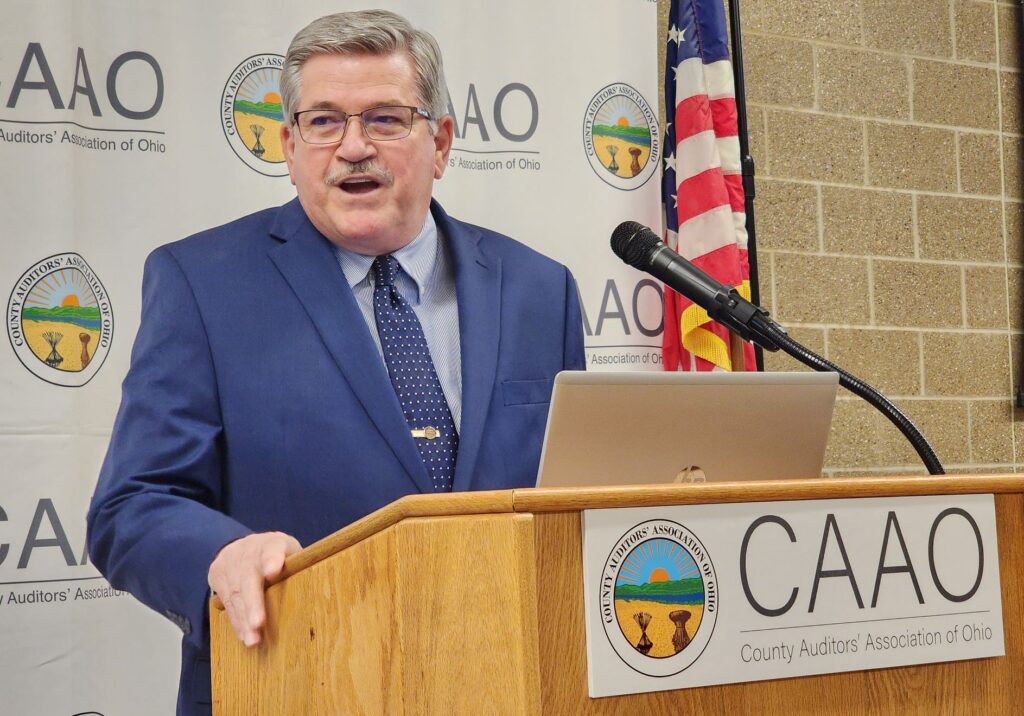
They also want the responsibility for reform to be placed at the right door – not at the county auditors offices or the school districts – but squarely with the state lawmakers who keep sidestepping the issue, the CAAO officials said.
After being on the front line of the property tax problem in Ohio for numerous years, on Wednesday, they introduced four possible solutions dealing with valuation, tax rates and credits.
Expand the Homestead Program: Current law exempts taxes on the first $26,200 of property valuation for individuals 65 or older or permanently disabled who have an Ohio adjusted gross income of $36,100 or less. The CAAO proposes increasing both the valuation that would be exempt from property taxes and the income threshold so that more individuals can qualify for the program. This will allow some of our most vulnerable Ohioans to stay in their homes.
Eliminate the non-business credit and expand the owner occupancy credit: The State of Ohio pays a portion of qualifying property tax levies on behalf of residential and agricultural property owners, providing a 10% credit. The Non-Business Credit provides a 10% credit to all property owners with residential or agricultural properties, and the Owner Occupancy Credit provides a 2.5% credit to properties that are both owned and occupied as the individual’s primary residence. The CAAO proposes eliminating the Non-Business Credit as it often benefits for-profit owners, while expanding the Owner Occupancy Credit to a meaningful credit that would provide real tax relief to those homes that are owner-occupied.
Limit the growth in revenue received by school districts due to reappraisal changes: Under Ohio law, school levies are subject to a floor that will not allow the tax rate to be adjusted downward when reappraisal increases occur. The CAAO proposes eliminating this hard cap on rate reductions and, instead, limiting growth on certain school levies to an inflationary index, containing revenue growth for districts operating at the 20-mill floor. As a result of this most recent valuation increase, many of the school districts operating at the floor received revenue increases in excess of 20%.
Create a menu of targeted relief: Create tax relief programs aimed to protect low to moderate income residents. These programs could include tax deferrals, income tax credits, or abatements based on a long-term resident’s inability to pay the ever-increasing tax burden.
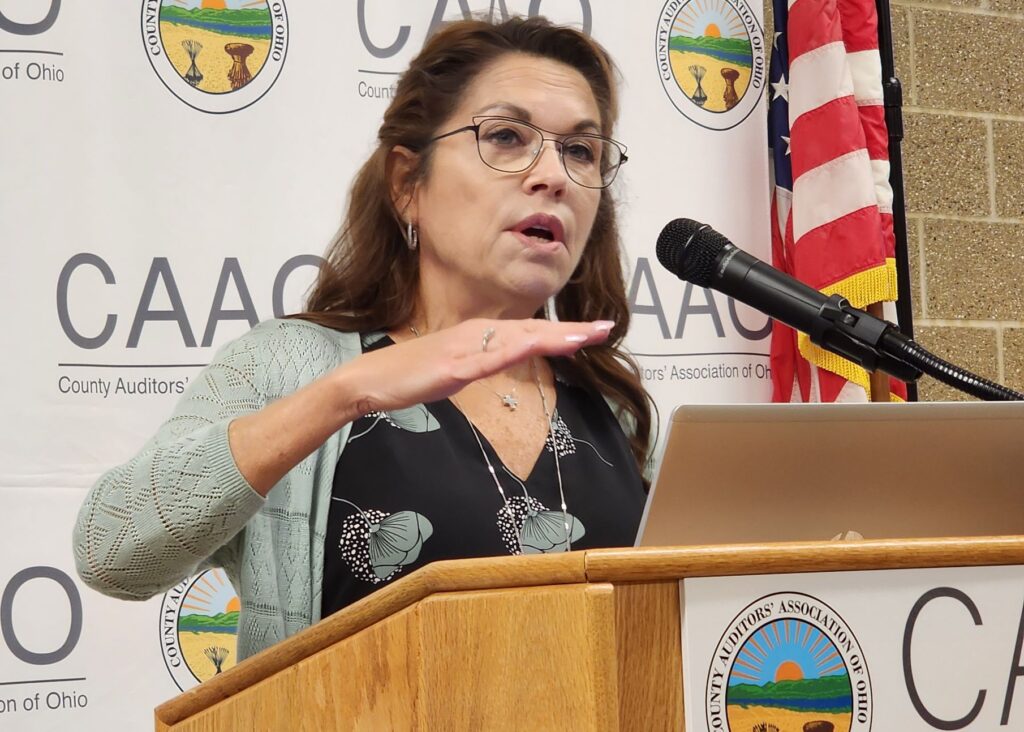
Union County Auditor Andrea Weaver pointed out the deficiencies with the Homestead Program. Under current requirements, seniors making more than $40,000 a year don’t qualify. The exemptions keep being diluted.
“It keeps getting smaller and smaller,” Weaver said.
But the biggest roadblock to reform is rooted in the state legislature’s unwillingness to learn how the 20-mill floor works, and make changes to it, Nolan said.
Currently, Ohio schools are guaranteed a minimum of 20 mills of property taxes to operate. However, when property values increase dramatically as they have in recent years, property owners can see large swings in their property tax bills. The CAAO proposes removing the 20-mill hard cap and changing the growth to be adjusted with inflation. This way, schools can continue receiving funding for increased costs, but not huge jumps unless they go back to the voters.
“This would protect taxpayers,” Nolan said. “Without requiring schools to run levies constantly.”
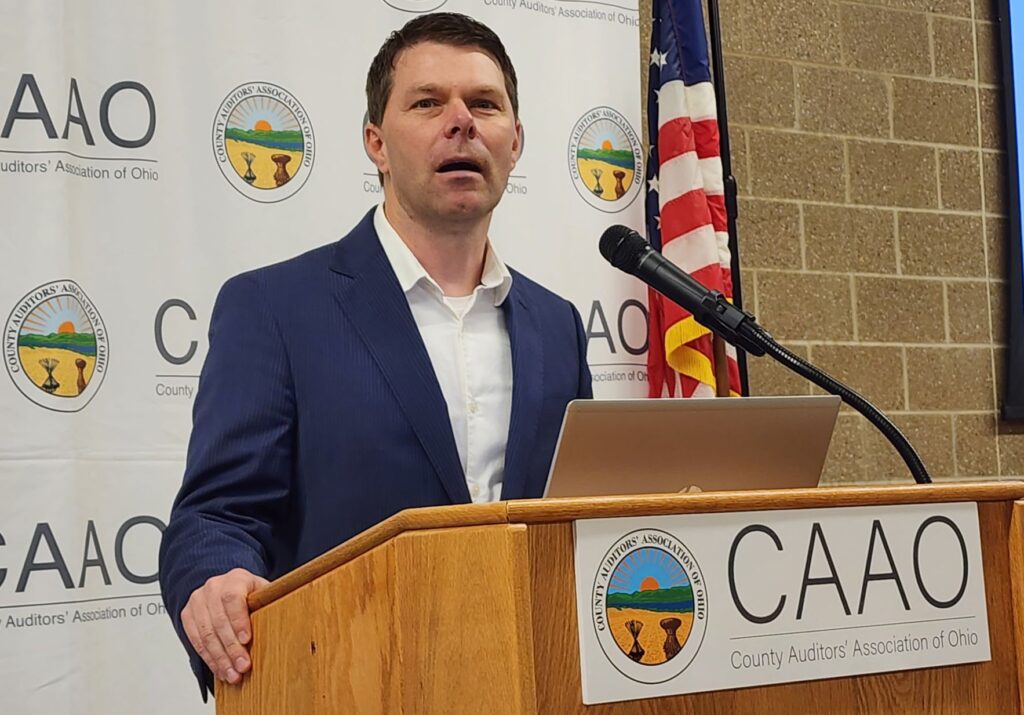
The state legislature is going through the motions – proposing 19 bills regarding property taxes since January, the auditors said.
“But those do not address taxpayer reform,” since they avoid addressing the 20-mill floor, Nolan said.
“Waiting for the housing market to crash is not a solution,” he added.
The problem isn’t the fault of school districts, Nolan said.
“We’re the only state that funds schools the way we do,” he said of the process ruled unconstitutional by the Ohio Supreme Court but not fixed by the state legislature.
“The legislature has done nothing to fix that,” Keith said. “The school funding issue continues to haunt Ohio.”
Instead the state lawmakers are proposing legislation that would require county budget commissioners (which include county auditors) to crack down on districts that have too much carryover funding.
“They keep saying schools have too much money,” Nolan said. “The schools don’t have too much money in most cases.”
“They want us to be the henchmen, I guess,” Oestreich said of the state legislature.
The county auditors also identified their lack of lobbying strength as a reason for stalled reforms. The powerful utility lobbyists were able to pressure for reform that benefited that industry.
“There is no lobby for the residential homeowners in Ohio,” Nolan said.
“The citizens of the state have not been loud enough,” Weaver said.
Property owners are encouraged to call their legislators and express support for comprehensive property tax reform in Ohio. To find the contact information for your legislator, visit https://www.legislature.ohio.gov/. For information about the CAAO, visit https://caao.org/.

